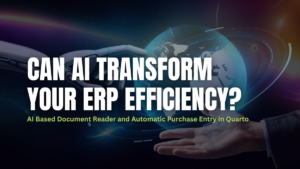In the age of digital transformation, a robust Enterprise Resource Planning (ERP) system is the backbone of modern business. Yet, choosing the right ERP solution is a weighty decision that can significantly impact your organization’s efficiency, productivity, and overall potential. With myriad options available, making an informed choice is paramount. This article delves into the essential factors that should guide your ERP selection process.
1. Define Your “Why”
Before diving into vendor comparisons, start with a thorough needs assessment. What are your organization’s most pressing pain points? Are you struggling with fragmented data, inefficient processes, or limited visibility across departments? Map out your core business processes in painstaking detail, identifying areas where an ERP can streamline operations and yield substantial benefits. This self-awareness will ensure that you focus on solutions that address your genuine needs.
2. Prioritize Scalability and Flexibility
An ERP system should not just meet your current needs; it needs to evolve alongside your business. Consider your projected growth trajectory, potential expansion plans, and any anticipated changes in your industry. Evaluate the ERP’s capacity to handle surges in data volume, increased user counts, and the adaptability to integrate with future technologies. Opting for a scalable and flexible solution ensures longevity and protects your investment.
3. Seamless Integration: The Key to Operational Harmony
Your ERP should be the central nervous system of your technological ecosystem. Assess its ability to communicate effortlessly with your existing systems, including CRM, accounting software, and any industry-specific tools. A well-integrated ecosystem prevents data silos, promotes real-time information flow, and empowers a holistic view of business operations.
4. Customization: Balance Standardization with Adaptability
Striking the right balance between out-of-the-box functionality and customization is vital. Consider the extent to which the ERP can be configured and tailored to your precise workflow requirements without overly complex and costly modifications. Assess the vendor’s customization capabilities and track record in catering to unique client needs.
5. User Experience: The Adoption Game-Changer
Even the most powerful ERP is rendered ineffective if users struggle with its interface. Prioritize solutions with an intuitive design, logical navigation, and comprehensive training resources. Remember, a user-friendly system translates to faster adoption, reduced errors, and greater employee satisfaction, all of which contribute to the ROI of your ERP investment.
6. Vendor Reputation and Support: Your Long-Term Partner
Partnering with an ERP vendor is an ongoing relationship. Choose a provider with extensive experience, a positive track record in your industry, and a commitment to exceptional implementation and support services. Seek a true collaborator with a vested interest in your success, one who understands your evolving needs and is readily available for troubleshooting and ongoing optimizations.
7. Total Cost of Ownership: Beyond the Price Tag
The initial purchase price is only one piece of the financial puzzle. Carefully analyze the Total Cost of Ownership (TCO), factoring in:
- Implementation costs
- Maintenance and support fees
- Training expenses
- Potential upgrade and customization costs
- Hardware and infrastructure requirements
8. Cloud vs. On-Premise: Choosing the Right Deployment Model
Cloud-based ERP solutions offer scalability, accessibility, and reduced upfront infrastructure costs. On-premise deployments provide greater control and customization potential but can involve higher investments in hardware and IT personnel. Weigh the trade-offs carefully, considering your organization’s technical expertise, security requirements, and long-term strategic plans.
9. Change Management: The Often-Overlooked Success Factor
A successful ERP implementation is not merely about software. It necessitates proactive change management strategies. Thorough training, clear communication, and ongoing support throughout the adoption process are critical. Involve stakeholders from across departments early on to foster buy-in and ensure a smooth roll-out with minimal disruption to business operations.





